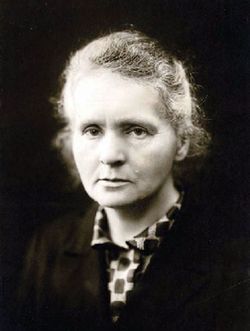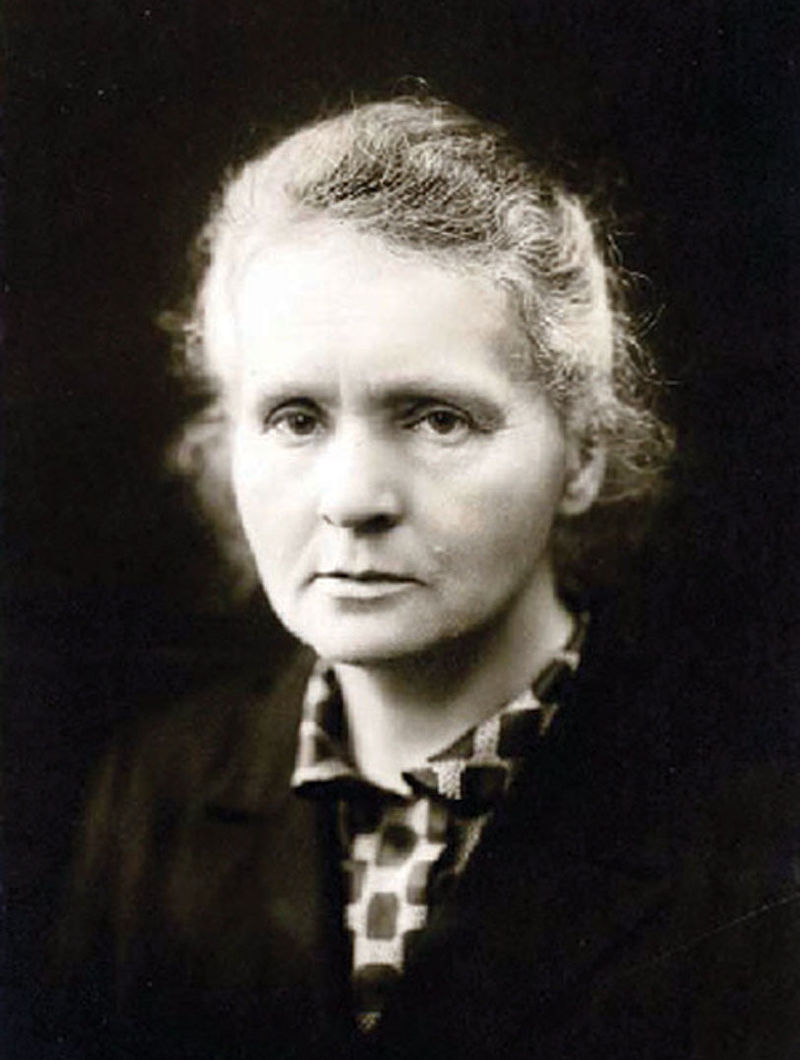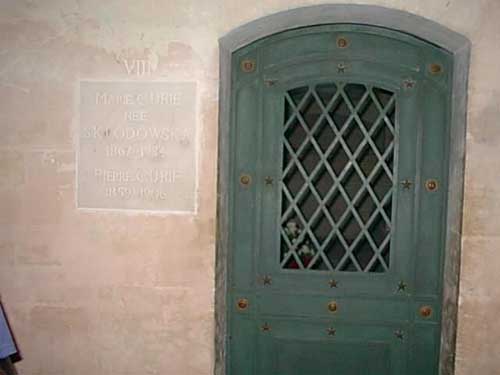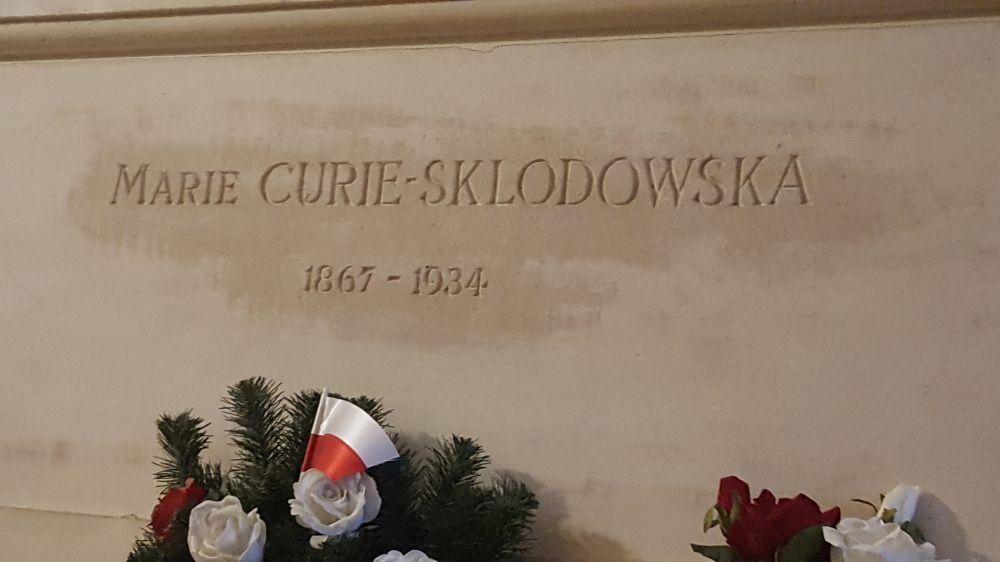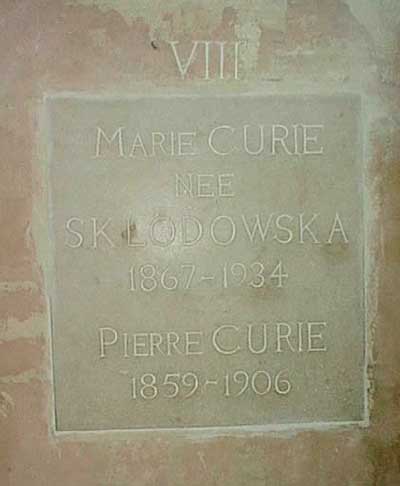Born the daughter of a school teacher, she left Poland after being in a Polish student revolution against the domination of the Austria Empire of her homeland. After receiving degrees in mathematics and physics, she met Pierre Curie in 1894, a professor in the School of Physics, and, the following year, they were married. She succeeded her husband as Head of the Physics Laboratory at the Sorbonne and was the first woman in Europe to receive her Doctorate of Science in June 1903.
In 1903, she became the first woman to be awarded the Nobel Prize for Physics. She shared her half of the Nobel Prize with her husband and the other half was awarded to Henri Bequer.
Following the tragic death of her husband in 1906, she took his place as Professor of General Physics in the Faculty of Sciences at the Sorbonne University in Paris, the first time a woman had held this position.
In 1911, she was the recipient of an unprecedented second Nobel Prize for Chemistry for the discovery of radium and polonium, the isolation of radium, and the study of the nature and compounds of radium. She became the first person to receive two Nobel Prizes and to receive them in two different fields of science.
She was also appointed Director of the Curie Laboratory in the Radium Institute of the University of Paris, founded in 1914.
During World War I, she led in the developing of portable X-ray machines, called "Little Curies," to be used in field hospitals.
Besides her Nobel Prizes, she received, jointly with her husband, the Davy Medal of the Royal Society in 1903.
She traveled twice to the United States, in 1921 and in 1928. On the 1921 trip, in recognition of her achievement in science, United States President Warren G. Harding, on behalf of the women of America, presented her with one gram of radium, which had become more valuable than diamonds. She received high esteem and admiration by scientists throughout the world.
Her eldest daughter, Irene Joliot-Curie, was the recipient of the Nobel Prize for Chemistry in 1935, the year after Marie Curie died. The younger daughter, Eva, wrote Marie Curie's biography.
In 1995, she was the first woman laid to rest under the famous dome of the Pantheon in Paris. With an audience of grade school to college-level students, there have been numerous books written through the years on her remarkable life.
Born the daughter of a school teacher, she left Poland after being in a Polish student revolution against the domination of the Austria Empire of her homeland. After receiving degrees in mathematics and physics, she met Pierre Curie in 1894, a professor in the School of Physics, and, the following year, they were married. She succeeded her husband as Head of the Physics Laboratory at the Sorbonne and was the first woman in Europe to receive her Doctorate of Science in June 1903.
In 1903, she became the first woman to be awarded the Nobel Prize for Physics. She shared her half of the Nobel Prize with her husband and the other half was awarded to Henri Bequer.
Following the tragic death of her husband in 1906, she took his place as Professor of General Physics in the Faculty of Sciences at the Sorbonne University in Paris, the first time a woman had held this position.
In 1911, she was the recipient of an unprecedented second Nobel Prize for Chemistry for the discovery of radium and polonium, the isolation of radium, and the study of the nature and compounds of radium. She became the first person to receive two Nobel Prizes and to receive them in two different fields of science.
She was also appointed Director of the Curie Laboratory in the Radium Institute of the University of Paris, founded in 1914.
During World War I, she led in the developing of portable X-ray machines, called "Little Curies," to be used in field hospitals.
Besides her Nobel Prizes, she received, jointly with her husband, the Davy Medal of the Royal Society in 1903.
She traveled twice to the United States, in 1921 and in 1928. On the 1921 trip, in recognition of her achievement in science, United States President Warren G. Harding, on behalf of the women of America, presented her with one gram of radium, which had become more valuable than diamonds. She received high esteem and admiration by scientists throughout the world.
Her eldest daughter, Irene Joliot-Curie, was the recipient of the Nobel Prize for Chemistry in 1935, the year after Marie Curie died. The younger daughter, Eva, wrote Marie Curie's biography.
In 1995, she was the first woman laid to rest under the famous dome of the Pantheon in Paris. With an audience of grade school to college-level students, there have been numerous books written through the years on her remarkable life.
Bio by: Linda Davis
Inscription
MARIE CURIE-SKLODOWSKA
1867 - 1934
Family Members
Advertisement
See more Curie memorials in:
Explore more
Sponsored by Ancestry
Advertisement
